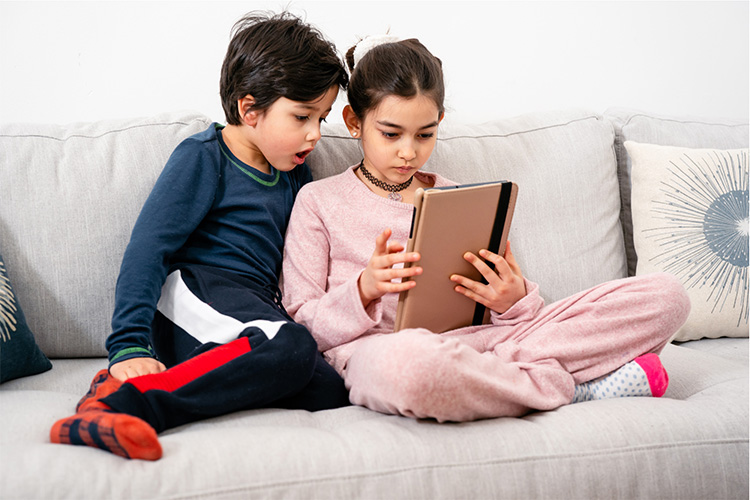Secure your Kid's Spot in our Writing Classes! Register here!

What we're talking about!
Check back often for updates!

In education, especially reading and writing, tradition holds a cherished place, with reading tangible books and handwriting essays holding a special place in classrooms and beyond. The merits of these practices cannot be overlooked because they have a unique set of cognitive, emotional, and physical benefits that modern technology has not been able to replicate. Yet, as we sail through the 21st century, digital advancements are knocking at our doorsteps of literature and composition, offering tools that promise efficiency, interactivity, and boundless possibilities. This essay delves into the intricate dance of integrating cutting-edge technology with revered traditional practices in reading and writing. By exploring this harmonious blend, we'll discover how we can enhance the learning experience, cater to diverse learner needs, and cultivate a generation of readers and writers who appreciate the legacy of the past while harnessing the power of the present.
Let’s begin by acknowledging that the goal of this essay is not to establish that traditional methods of reading and writing are better or worse when compared to more modern techniques. Rather we want to explore how we can incorporate some modern tools into reading and writing in order to support neurodivergent as well as neurotypical learners. Traditional reading and writing have always been more than just activities; they've been experiences. No one can deny the nostalgia and the sense of intimacy that handwritten letters evoke. The tactile sensation of flipping through pages, the rustling sound of paper, the scent of a fresh book, or the act of letting ink flow on paper—each evokes emotions and connections. These methods anchor us to the past, offering a tactile and sensory experience that digital means often struggle to replicate.

Incorporating modern technology in learning is more than just an educational trend; it's a transformative shift that enhances the teaching and learning experience. The introduction of digital tools and platforms in the classroom offers students a more interactive and personalized approach to education. It prepares students for the demands of the future workplace, equipping them with the digital skills and literacy essential for success in the 21st century. Bridging the digital divide between modern tech and traditional practices in schools, particularly in the context of reading and writing, is crucial for creating an inclusive educational environment. The following are a few ways that schools can implement these strategies to ensure a balanced educational experience, where students appreciate and benefit from both traditional practices and the advantages of modern technology.
Combine traditional teaching methods with digital tools. For example, students can read a chapter from a physical book and then discuss it on an online forum where discussions are enriched with diverse perspectives, multimedia content, and perhaps even insights from students across the globe. This merger not only amplifies comprehension but also encourages digital literacy and online collaboration. Students could use digital platforms for quizzes related to that chapter. The utilization of digital platforms for quizzes means instant feedback. Students no longer have to wait for a paper to be graded; they can understand their areas of improvement immediately and access resources to strengthen their grasp on topics.
Introduce a module or lesson plan in the curriculum that focuses on teaching students how to use digital reading and writing tools, ensuring that they are equipped with skills for both traditional and digital literacy. As digital platforms are swiftly becoming central, the importance of a tech literacy curriculum isn't just about keeping up with the times; it's about equipping students with the tools they need to navigate and succeed in an increasingly digital world. This foundational knowledge ensures that students are comfortable with the primary tools they will encounter in their academic journey. But the tech literacy curriculum is more than just tool familiarity. It is about managing their digital footprint, learning the principles of good online communication, digital safety, and ethics.
Libraries, the heart of any educational institution, can also exemplify blended learning. While shelves stacked with physical books preserve the sanctity and tradition of reading, integrating digital resources like e-books and online journals offers students vast repositories of information at their fingertips. Such a combination ensures that learners have diverse resources tailored to their individual preferences. The scope of online materials is vast, as the world of academia produces more and more research, the ability to have updated information and the latest studies becomes a significant advantage of digital libraries. Additionally, digital resources offer accessibility features. Font sizes can be adjusted, text can be read aloud, and translations can be quickly procured. For students with disabilities or those coming from diverse linguistic backgrounds, such features can be invaluable. While stocking up on e-books, ensure that the school library still retains a rich collection of physical books. Allow students to choose their preferred reading medium.
Adding a social element to any learning activity can truly improve its value and make it fun at the same time. These tools, when guided by a teacher correctly, can mix productivity and creativity, allowing students to share and collaborate on projects, give and take instantaneous feedback, and brainstorm with peers or just hang out. By providing avenues to share research materials or their own notes on thinking, students will have opportunities to express their perspectives and actively engage in the learning journey. Embrace platforms like Google Docs, Scrivener, or PenPal schools, allow for real-time collaborative writing while still providing an environment conducive to traditional solo writing.
The landscape of storytelling in education has witnessed a renaissance with the advent of digital tools. By promoting projects that combine traditional artistry with modern technology, schools can offer students a more enriched and interactive learning experience. For instance, digital graphic novels that integrate hand-drawn art evoke a sense of traditional craftsmanship while still embracing the advantages of digital interactivity. Likewise, physical books enhanced with QR codes seamlessly blend the tactile satisfaction of printed pages with the dynamic multimedia content of the digital realm. Such innovations not only cater to diverse learning styles but also empower students to become creators in the digital age, synthesizing classical techniques with the vast potential of contemporary technology.
In the age of technology, storytelling in schools is undergoing a vibrant transformation through the adoption of digital tools, ushering in the era of digital storytelling. No longer confined to just pen and paper, students can now weave tales using a diverse array of multimedia elements—combining text with imagery, sound, and even video to create rich, immersive narratives. By leveraging platforms like podcasting apps, video editing software, and graphic design tools, students can articulate their stories in multifaceted ways, enhancing both their creativity and tech-savviness. This not only provides them with a broader canvas to express their ideas but also prepares them for a future where digital proficiency is paramount. By incorporating digital storytelling in schools, educators are empowering the next generation of storytellers to harness the full potential of modern tools, ensuring their tales resonate in today's interconnected world.
The key to a successful digital renaissance lies not in prioritizing one form over the other but in recognizing the unique strengths each offers. For instance, educators can pair classic literature books with digital platforms that offer context, historical background, or even interactive discussions. Writers, on the other hand, can start their drafts on paper, letting ideas flow organically, and later move to digital tools for editing, sharing, or publishing. Schools and institutions can curate blended learning experiences—like starting a lesson with a digital simulation followed by group discussions around physical texts. In personal spaces, one might find solace in a paperback novel on some days and on others, choose an e-reader for convenience during travel.
—-----------------------------------------—-----------------------------------------—------------------
Finding new ways to inspire kids to write and communicate effectively is one of my life’s work which is why I include many fun activities in our writing classes to inspire the next generation of thinkers. Want to learn more about our story writing classes? Check us out here.
Help your kids fall in love with reading!
Need a list of amazing books to get your kids inspired about writing their own stories?
Grab your free copy by completing the form.
We'll email you the ebook!